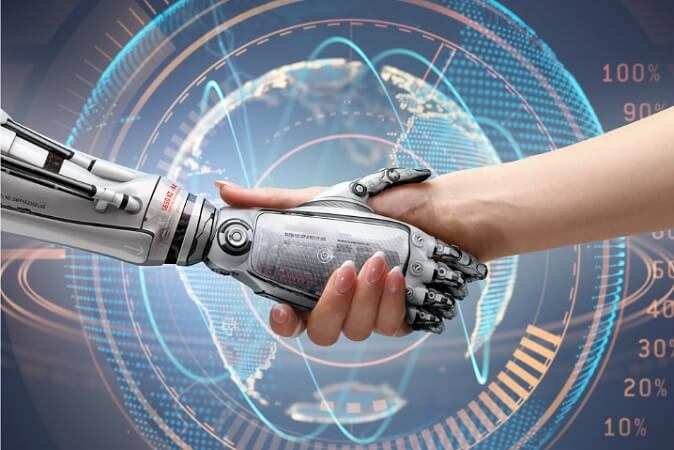Human intelligence has evolved over time, starting with the discovery of fire and the invention of the first wheel, to the investigation and understanding of extremely complex phenomena. This process has required generations of the human race to learn over the centuries through systematic efforts of discovery, experimentation, deduction, and induction, and sometimes by mere chance.
How easy (or difficult) then is Artificial Intelligence (AI) to emulate human behavior? Today's AI systems try to replicate the 'feel-think-do' cycle in many ways, building a learning base as they go. Some examples are smart bots used for customer interactions, smart search engines, and smart information extractors, each with its own unique complexities and challenges.
Developing the skills to perform a task from start to finish successfully usually means linking one or more competencies, thus adding more complexity to the process. For a moment, let us overlook the versatility of human beings and explore the complexities involved in developing even a single human capacity. Let's consider an intelligent system capable of producing specific topic bulletins for circulation among relevant groups within a company.
Looking for good content
A human being seeking information would begin by understanding the available sources of information and the knowledge of how to access such information. By contrast, an AI solution would need to know the available repositories of information where to look for it. Would it be extended to the company intranet or the internet? What business knowledge repositories or subscriptions to information services can you access?
Once the information sources were identified, the AI system would have to determine the information access mechanism of each of these repositories. Considering that each would differ in the way it stores and shares information, the solution would have to have the ability to 'talk' to each of the sources, a challenge that is usually addressed by creating adapters to facilitate connection.
Beyond identifying the sources of information and knowing how to access them, there is the challenge of identifying what to look for. For example, a human seeking AI information would naturally extend the search to terms such as cognitive intelligence, machine learning, deep learning, and neural networks. Likewise, an intelligent system would need to extend the search for terms to synonyms, related phrases, and similar concepts, an ability that requires defining a dictionary that is relevant to the domain or topic.
Creating the best stories
Once the search covers a complete series of articles, the next step would be to filter the duplicates. While recognizing exact duplicates is straightforward, identifying similar items in your coverage and intent is less so. Very often, two articles with a similar series of keywords could present drastically different opinions, and some could even be offensive. While Natural Language Understanding (CLN) has evolved significantly as a technology, increasing a focus on human involvement could be a good solution to these difficult AI problems.
The next step would be to organize all the information collected, order the articles based on common features such as subtopics, chronology and companies referred to, for example. For an AI system, this would mean using one or more approaches such as rule-based correlation, unsupervised learning, and supervised learning with the use of human involvement to arrive at related article sets.
To ensure that the most interesting articles appear first, a smart solution would also need to prioritize articles based on parameters like relevance, author ranking, quantitative data support, and audience preferences. One would have to take advantage of technologies such as CLN, deep learning, and rule-based reasoning to develop models for classifying articles based on different parameters.
Close the cycle
Finally, the solution will need to write the newsletter as a collection of summaries of the various articles it has collected, duly filtered, grouped and prioritized. Integration usually involves one or two approaches: extraction, which identifies the most prominent sentences based on the frequency of occurrence of key terms or the position of the sentences in the text; and abstraction, which involves a full understanding of the article based on CLN and lexical analysis. Currently, extraction-based integration would be the most likely option, and perhaps would require support from human involvement. Thus, the generated summaries would have to be collated by their groups and evaluations to write the final bulletin. With this step, will the AI system function be over? Well, not quite ...
Humans are naturally programmed to use their experiences to refine their behavior. To make an intelligent system learn in a similar way by itself and improve with time and experience, one would have to develop mechanisms to capture experiences. This would mean interventions and human involvement during various stages of newsletter production, and then using this learning to fine-tune the base AI models.
To accelerate the adoption of AI systems and make technology truly dominant, there is a need for platforms that can simplify the development of AI solutions by providing the right levels of cognitive ability abstraction as well as the ability to assemble, customize and extend them. This is why the ideal in the future would be to shift the strength of AI application development from developers to business users.


